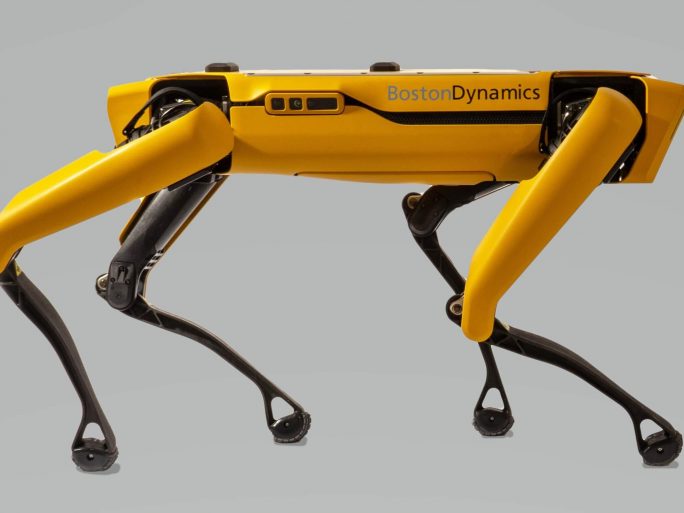Robot Dog Spot From Boston Dynamics On Sale For $74,500

Fancy being an owner of a robot dog? Well, if you happen to have £59,000 in cash spare, then you can purchase Spot from Boston Dynamics
Boston Dynamics has begun selling Spot, its robotic dog, nearly five years since it first showed off the four-legged robot to the world.
It said the launch marks the first time that businesses can purchase a Boston Dynamics robot, and represents Boston Dynamics’ first online sales offering.
The agile robot can climb stairs and traverse rough terrain, and was first revealed to the world back in February 2015, when Spot became the public face of the firm, after it build previous models including the BigDog (pictured), AlphaDog and LS3 robots.
![]()
Boston Dynamics
Spot (far left) features four hydraulic legs, a sensor head to help him navigate and the ability to remain upright even when walking on rough terrain, up steps, or when kicked by a member of the Boston Dynamics team.
Boston Dynamics actually started life back in 1992 as a spinoff from the Massachusetts Institute of Technology.
It was a military contractor, which was acquired by Google’s parent Alphabet in December 2013 as part of the latters’ robotic strategy.
The robotics firm was made famous by DARPA-funded projects such as the robotic pack mule BigDog and bipedal humanoid rescue worker Atlas.
![]()
But three years later in 2016, Alphabet announced it was seeking a buyer for the company, as part of its strategy on extracting revenue streams from its so called “moonshot” projects.
In June 2017, Japanese telecommunications and Internet business Softbank purchased Boston Dynamics for an undisclosed sum.
Spot sale
Now Boston Dynamics has announced that Spot is available for sale for $74,500 (£59,382).
![]()
Spot had previously only available for short-term lease under Boston Dynamics’ Early Adopter Program.
“Spot is designed to go where other robots can’t go and to perform a broad number of tasks,” said the firm. “The robot can be reconfigured for various use cases to increase efficiency and greatly reduce safety risks in the workplace.”
It said that over 150 Spot robots were successfully used by domestic and international businesses and research facilities, as part of an early adopter program. For example, early adopters used Spot robots to document construction progress, monitor remote or hazardous environments, and provide situational awareness.
This included potentially dangerous sites such as power generation facilities, decommissioned nuclear sites, factory floors, construction sites, and research laboratories.
![]()
“At Boston Dynamics, we have spent decades creating and refining robots with advanced mobility, dexterity and intelligence because we believe agile robots can solve a broad range of real world problems,” said Marc Raibert, chairman and founder of Boston Dynamics.
“The combination of Spot’s sophisticated software and high performance mechanical design enables the robot to augment difficult or dangerous human work,” said Raibert. “Now you can use Spot to increase human safety in environments and tasks where traditional automation hasn’t been successful.”
It should be noted that Spot is intended for commercial and industrial use and is currently only available for purchase in the United States. The firm will continue to lease Spot robots to customers in select international markets through its Early Adopter Program.
Pepper robot
This is not the first robot that Softbank has sold.
In June 2015, Softbank began selling the Pepper robot for $1,611, which was billed as the world’s first robot capable of reading human emotions.
The Pepper robot, is a 4 foot high robot that weights 28 kilograms and boasts Wi-Fi connectivity. It can dance and make human-like movements and body language thanks to more than 20 different motors and highly articulated arms.
![]()
The machine is being touted as one of the first genuinely interactive robots, able to take in the surroundings into consideration before reacting pro-actively using proprietary algorithms. It can make jokes and estimate human emotions based on expressions and voice tones, including fear and excitement. It will adjust its interaction based on these inputs.
Other features include a 12 hour battery life and laser sensors (to allow it to judge situations rather than for extermination purposes). It also comes with an open operating system, and the Aldebaran software development kit (SDK) should allow developers to customise the robot for possible uses in the construction, health care and entertainment industries.
Pepper was initially being marketed at families and the elderly.